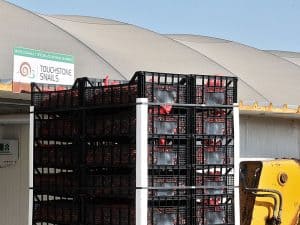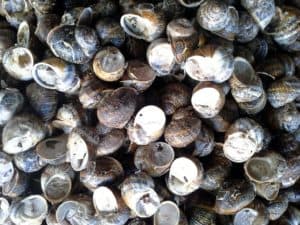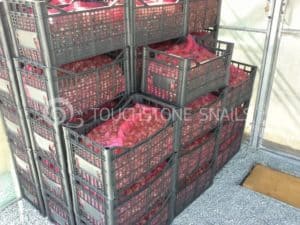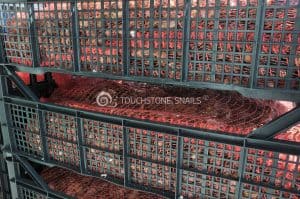Snail Trade – Guaranteed Absorption of your Snail Production.
Touchstone Snails offers to all its snail farmers a purchase agreement pursuant to which is buying all the snail production of its clients at the best snail market price.
Touchstone Snail prioritized production growth through advanced expertise. Consequently, when snail farmers dutifully implement Touchstone Snails’ guidelines, their snail production can be up to 26000kg in 120 productive days. This means that annually the snail farmer can have approximately €104,000 in revenue.
All associate snail farmers are registered in the Snail Farming Company Register of the Ministry of Agriculture and Natural Resources. Additionally, all traded snails are certified and approved by the state’s veterinary services.
- International snail consumption in 2007 is estimated at around 420,000 tons.
- Snail farming has contributed only 63,000 tones of snails (15% of the total demand). The remaining 357,000 tons were exclusively supplied through conventional snail harvesting in poor-economy countries.
- The total value of snail production/consumption for 2007 is estimated at $7 billion.
Spain and Portugal are considered the biggest snail consumers of the Helix Aspersa species. Over 80% of the snails promoted as “Garacoles” that was traded and consumed in these two counties, was supplied through snail harvesting in Algeria and Morocco.

Estimated snail consumption is about 65.000 tons per year
We set below some relevant points from reliable studies evidencing that the international snail demand and the snail market are constantly increasing. The company’s findings through its long working experience, through the last 20 years that follows the market trends and from the several studies that the experts of Touchstone have studied, evidenced that the snail industry is a much larger industry than the figures indicated in these studies.
Information received from Touchstone Snail
In 2014, the total worldwide market consumption of snail meat was estimated around 450.000 tons and has reached 12 billion dollars. This quantity was received as follows:
- The 67,500 tons came from snails that have been collected from snail breeding units.2.
- The remaining 382,500 tons (of all traded goods) have been collected from nature, in poor countries where this activity found a great resonance.
In France, in 2010 there was a lack of 90,000 tons of snails due to their high consumption. Based on this information, it is expected that the need for snails will not be covered even in the next 10 years.
- Information received from independent scientific studies
- The total worldwide consumption for the year 2010 has been estimated around 425,000 tons. The 12% of this amount (50,000 tons) was received from various snail breeding units while the rest (375,000 of all traded goods) derived from nature, from countries where hand-picked snails is still allowed.
- The 425,000 tons of snails were consumed as follows:
- Fresh snails – about 000 tons (29.41%)
- Frozen snails – about 000 tons (49.41%)
- Canned snails – about 90,000 tons (21.28%)
- France has always been in the top position, not only for the worldwide consumption of snails but also for the industrial processing of snails that is exported globally.
- Spain and Portugal are also amongst the biggest European consumers of Helix Aspersa snails. Over 80% of the product marketed and consumed is derived from nature and it is imported from Morocco and Algeria. The annual consumption is estimated at 60,000 tons.
- The global consumption is 400.000 – 450.000 tons per year, of which only 15% comes from snail breeding units, while the remaining 85% comes from snails collected from nature.
- Snails that end up to consumers as a fresh product is 30%, 47% frozen product and 23% canned snails.
- 80% of the snail breeding units in Europe rears Helix Aspersa Muller.
- The European market is in deficit at 60.000-80.000 tons per year.
- Far East, notably Japan, USA and developing Arab states are increasingly turning to this product because it is a characteristic of the Mediterranean cuisine – diet and because it is consistent with the dietary fashion.















